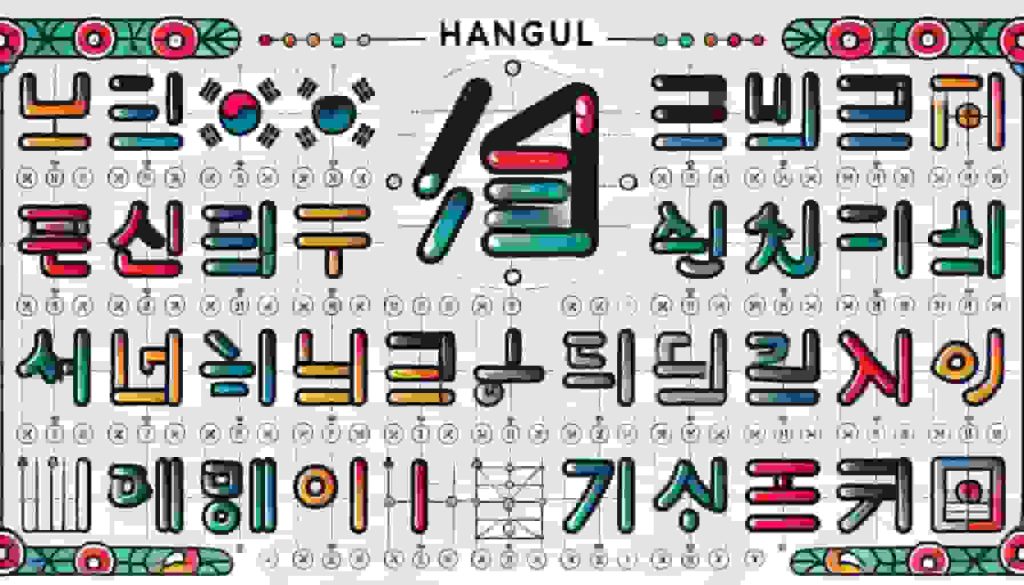3. Hangul: The Korean Alphabet introduce
History and Creation of Hangul
Hangul is the unique and scientific writing system of the Korean language. It was created in the 15th century by King Sejong the Great and his scholars. Before Hangul, Korean people used Classical Chinese characters, which were difficult for commoners to learn. To address this issue, King Sejong introduced Hangul in 1443 to promote literacy among all Koreans. Hangul was designed to be easy to learn and use, reflecting the sounds of the Korean language accurately.
Consonants and Vowels
Hangul consists of 14 basic consonants and 10 basic vowels. The consonants are ㄱ (g), ㄴ (n), ㄷ (d), ㄹ (r/l), ㅁ (m), ㅂ (b), ㅅ (s), ㅇ (silent/ng), ㅈ (j), ㅊ (ch), ㅋ (k), ㅌ (t), ㅍ (p), and ㅎ (h). The vowels are ㅏ (a), ㅑ (ya), ㅓ (eo), ㅕ (yeo), ㅗ (o), ㅛ (yo), ㅜ (u), ㅠ (yu), ㅡ (eu), and ㅣ (i). These basic letters can combine to form compound consonants and vowels, expanding the range of sounds in Korean.
Syllable Structure
Hangul is written in syllabic blocks, each consisting of at least one consonant and one vowel. A syllable can have up to three components: an initial consonant, a medial vowel, and a final consonant. For example, the word “한글” (Hangul) consists of two syllables: 한 (han) and 글 (geul). Each block fits into a square shape, making the writing system visually balanced and easy to read.
Practice Writing Hangul
To practice writing Hangul, start by familiarizing yourself with the basic consonants and vowels. Write each character repeatedly to get used to their shapes. Next, practice combining these characters into syllabic blocks. Use common Korean words to practice, such as 안녕하세요 (annyeonghaseyo, hello) or 감사합니다 (gamsahamnida, thank you). There are many online resources and apps available to help you practice writing and pronouncing Hangul correctly.
Example Practice
Start with basic consonants: ㄱ, ㄴ, ㄷ, ㄹ, ㅁ, ㅂ, ㅅ, ㅇ, ㅈ, ㅊ, ㅋ, ㅌ, ㅍ, ㅎ.
Add basic vowels: ㅏ, ㅑ, ㅓ, ㅕ, ㅗ, ㅛ, ㅜ, ㅠ, ㅡ, ㅣ.
Combine to form syllables: 가 (ga), 나 (na), 다 (da), 라 (ra), 마 (ma), 바 (ba), 사 (sa).
Practice common words: 사랑 (sarang, love), 친구 (chingu, friend), 가족 (gajok, family).

By consistently practicing, you will become more comfortable with reading and writing Hangul, and your understanding of the Korean language will deepen.